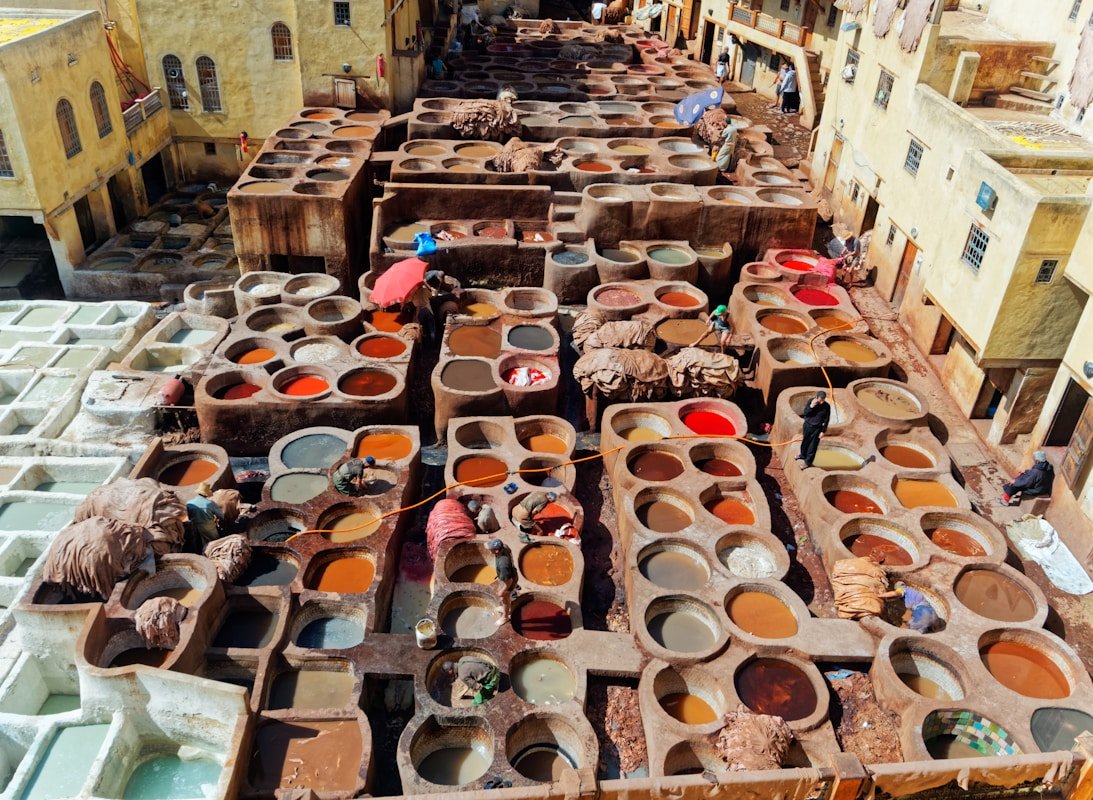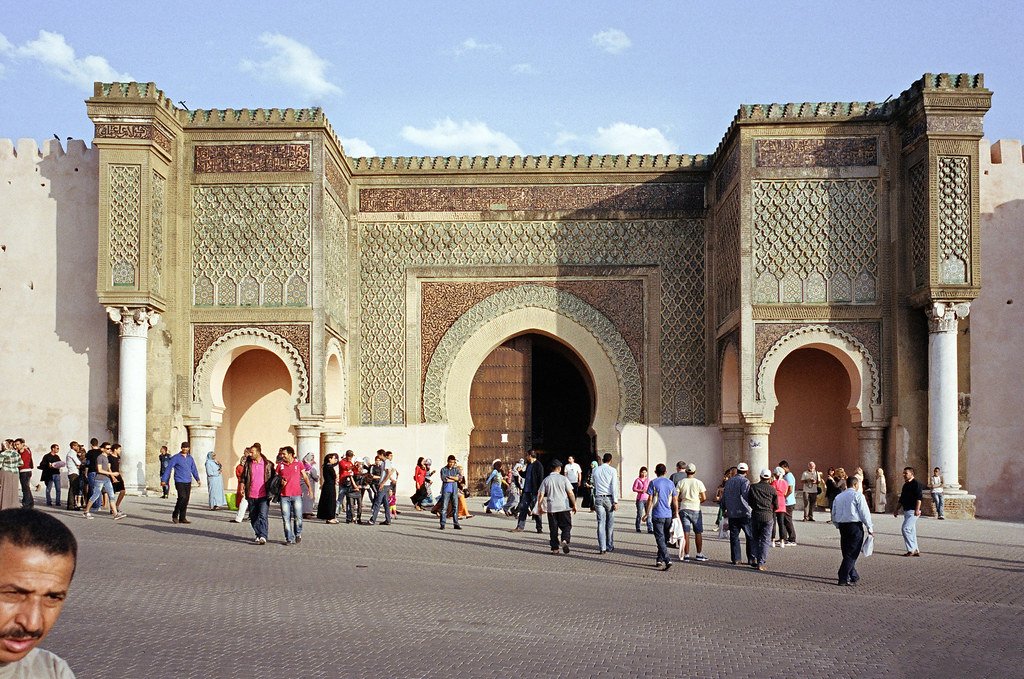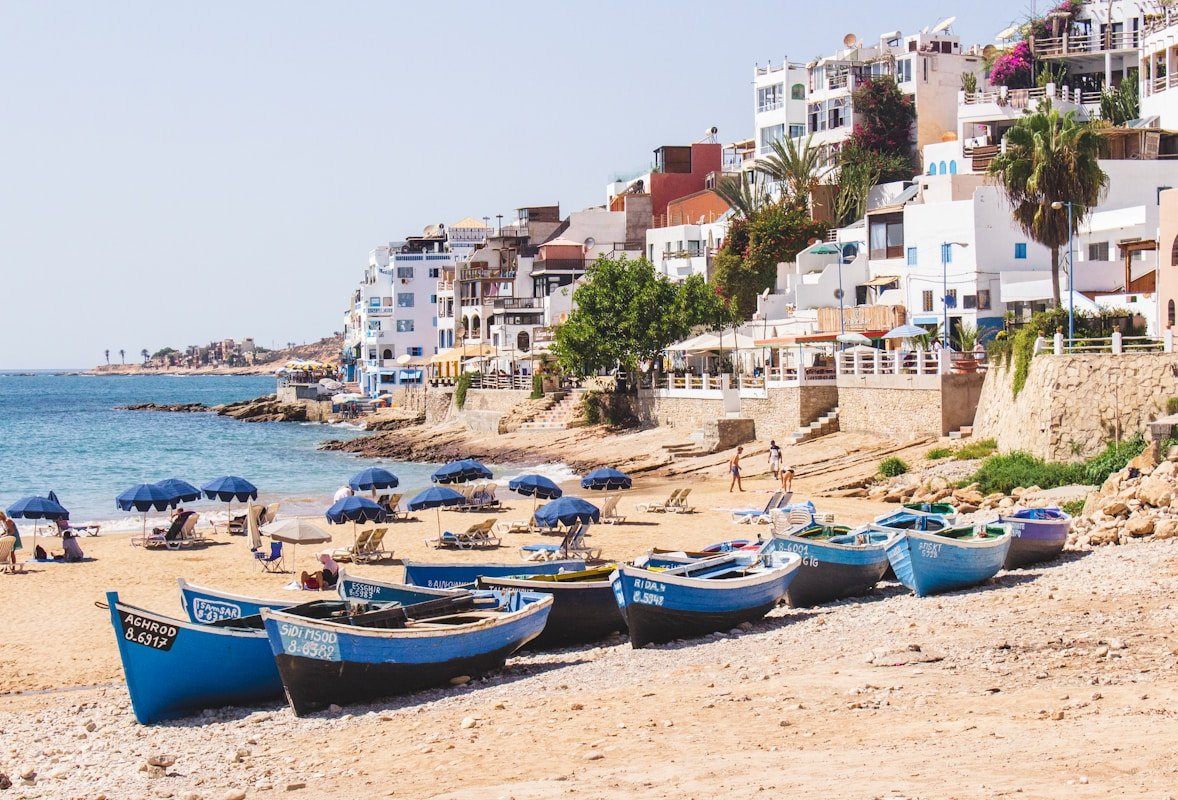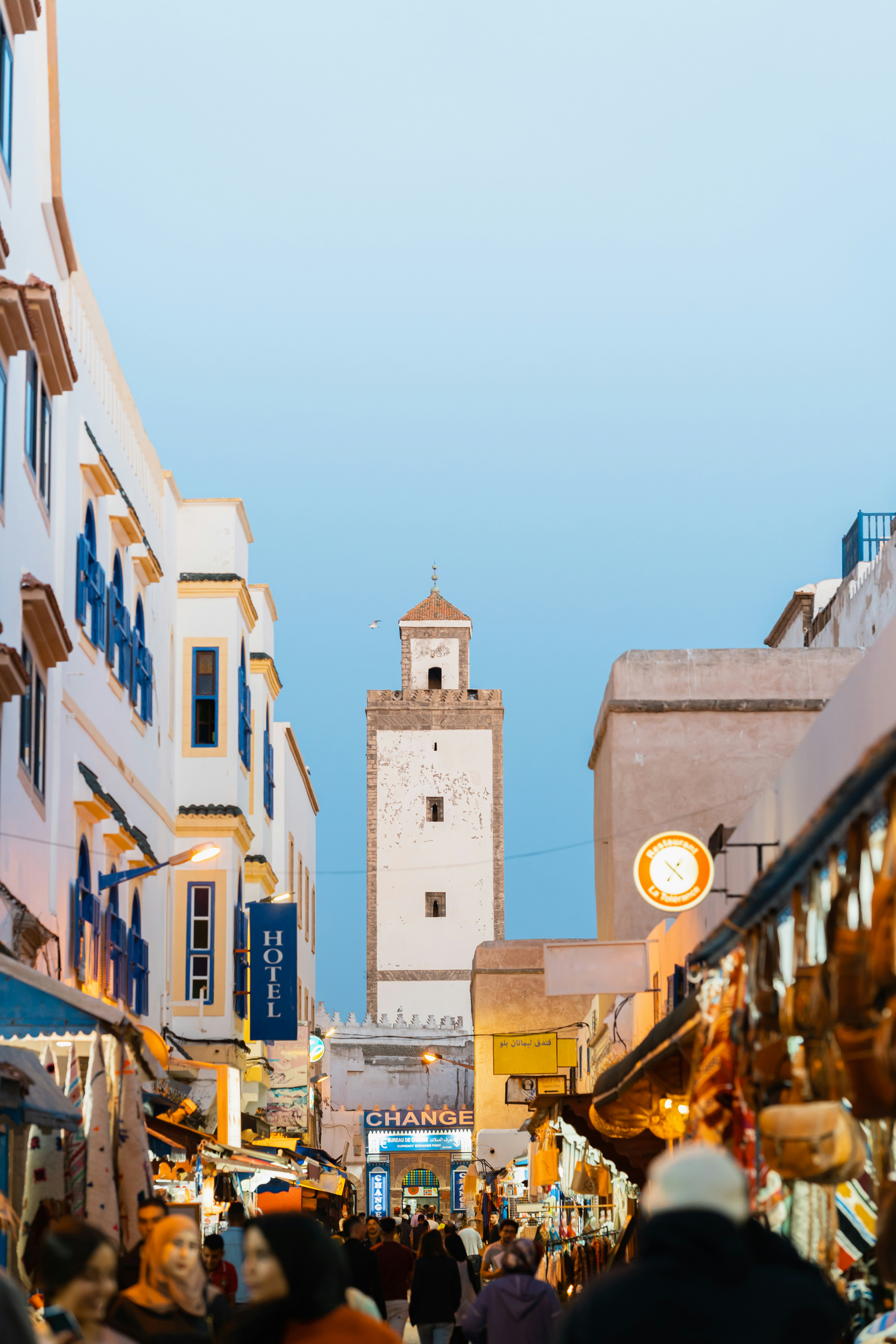Introduction to Morocco’s Imperial Cities
Morocco, a North African nation with a rich tapestry of history and culture, is home to a number of remarkable cities known as imperial cities. These cities—Fez, Marrakech, Meknes, and Rabat—serve as vital historical touchpoints, each embodying unique aspects of the country’s royal past and vibrant heritage. They are not just urban centers; they represent the political and cultural significance that has shaped Morocco over centuries.
Geographically, these imperial cities are strategically located throughout the country, each offering distinct landscapes and climates. Marrakeck, with its bustling souks and the backdrop of the Atlas Mountains, contrasts sharply with the scholarly ambiance of Fez, renowned for its historic medina and prestigious University of al-Qarawiyyin. Meknes, known for its grand gates and preserved sites, differs from Rabat, the contemporary capital, which blends modernity with historical architecture. Together, these cities create a mosaic of Moroccan identity.
The historical context surrounding Morocco’s imperial cities is intertwined with the rise and fall of various dynasties, each leaving its mark through monumental architecture, artistic achievements, and rich traditions. These urban centers acted as hubs of governance and culture, where leaders convened and intellectuals thrived. The concept of imperial cities is thus pivotal to understanding not only the political framework of Morocco but also its cultural landscape.
As we delve further into each city, we will uncover the unique contributions they have made to Moroccan identity and heritage, as well as how their storied pasts continue to influence Morocco’s present and future.
Fez: The Cultural Heart of Morocco

Fez, often regarded as the cultural heart of Morocco, boasts a rich historical tapestry that dates back to its establishment in the 9th century. Founded by Idris I, the city quickly became a pivotal center for Islamic learning and culture. The historical significance of Fez is underscored by its renowned educational institutions, particularly the University of Al Quaraouiyine, which is acknowledged by UNESCO as the oldest existing degree-granting university in the world. This prestigious institution has attracted scholars and students from across the Arab world, enriching the intellectual landscape of the region.
The medina of Fez, a UNESCO World Heritage site, is a breathtaking testament to the city’s architectural grandeur and urban complexities. Characterized by its narrow winding streets, vibrant souks, and intricately designed riads, the medina serves not only as a place of commerce but also as a living museum that encapsulates the spirit of Moroccan craftsmanship. The artisans of Fez are renowned for their mastery in pottery, leatherwork, and textiles, which reflect the rich cultural identity of the Moroccan people.
Moreover, Fez’s influence extends beyond its geographical boundaries; it plays a crucial role in defining Moroccan identity through its traditions and cultural practices. Its festivals, such as the Festival of World Sacred Music, attract visitors globally, showcasing the city’s dedication to preserving its heritage while embracing contemporary influences. As a center of spirituality and culture, Fez embodies the essence of Morocco’s historical evolution, making it a vital city in understanding the country’s past and its ongoing cultural narrative.
Marrakech: The Red City of Vibrant Heritage

Marrakech, often referred to as the “Red City” due to its distinctive red ochre buildings, stands as a testament to Morocco’s rich history. The city’s rise as an imperial hub traces back to the 11th century under the Almoravids, who established it as a strategic center for trade and culture. This pivotal role continued with the Almohads, further enhancing the city’s significance within the region. Its adobe structures and vibrant marketplaces embody the historical architectural innovations that were born during these periods, showcasing a blend of Berber, Arab, and Andalusian influences.
At the heart of Marrakech lies the iconic Koutoubia Mosque, a masterpiece of Almohad architecture, which has become a symbol of the city. Completed in the 12th century, the mosque features a stunning minaret that rises gracefully above the medina. This landmark not only serves as a place of worship but also stands as a historical marker reflecting the architectural advancements of its time, as well as the city’s prominence in Islamic scholarship and culture.
The bustling Jemaa el-Fnaa square further exemplifies Marrakech’s vibrant heritage. A UNESCO World Heritage site, the square pulsates with life, serving as a central social and cultural gathering point for locals and tourists alike. Traditional storytellers, musicians, and street vendors contribute to its lively atmosphere, showcasing the rich Moroccan culture and fostering an environment of cultural exchange. The souks surrounding the square offer an array of artisanal goods, reflecting the craftsmanship passed down through generations.
Through these elements, Marrakech not only highlights its architectural and cultural achievements but also emphasizes its enduring role as a key player in Moroccan history. The city continues to attract visitors from around the globe, eager to experience its vibrant heritage and experience the unique blend of history and modernity. As a result, Marrakech remains an essential component of Morocco’s imperial narrative, captivating all who venture into its enchanting embrace.
Meknes: The City of a Hundred Minarets

Meknes, often referred to as the City of a Hundred Minarets, stands as a testament to the grandeur of Moroccan architecture and history. Under the reign of Sultan Moulay Ismail in the late 17th and early 18th centuries, Meknes emerged as a royal capital, and the ambitious projects initiated during this time significantly transformed the city into a symbol of Islamic architectural prowess. The legacy of Moulay Ismail’s reign is visible through Meknes’s intricate gates, majestic palaces, and vast gardens, reflecting the Sultan’s vision of a powerful monarchy.
One of the city’s most iconic structures, the Bab Mansour gate, exemplifies the ornate design characteristic of the period. This monumental gate features elaborate tile work and a grand entrance, welcoming visitors into the city with splendor. Furthermore, the architectural significance of Meknes is highlighted by the Royal Palace, which showcases traditional Moroccan design and craftsmanship. The extensive use of intricate stucco work and carved wooden ceilings exemplifies the opulence that characterized the Sultan’s ambitions.
In addition to its architectural feats, Meknes played a crucial role in shaping the political landscape of Morocco. The city was strategically developed to demonstrate the Sultan’s authority and to serve as a hub for governance and administration. The historical importance of Meknes is further accentuated by its involvement in various political events, including its role as a center for diplomacy and trade. This pivotal position enriched Meknes culturally and economically, allowing it to thrive under the influence of its illustrious rulers.
Ultimately, Meknes stands not only as a city filled with remarkable structures but also as a historical narrative that illustrates the evolution of Moroccan politics and culture during a significant period of its empire. The legacy of Moulay Ismail continues to resonate within its walls, marking Meknes as an essential chapter in the story of Morocco’s imperial cities.
Rabat: The Modern Capital with a Rich Past

Rabat, the capital city of Morocco, holds a unique position in the nation’s history, having been established as the capital in the 17th century under the reign of Sultan Moulay Ismail. This strategic decision marked the city’s significance as a political and administrative center, reflecting Morocco’s evolving identity throughout the ages. Today, Rabat represents a seamless blend of history and modernity, an aspect that is notably apparent in its architectural landscape and urban planning.
The architecture of Rabat characterizes the marriage of contemporary design with traditional Moroccan elements. This is exemplified by landmarks such as the Kasbah of the Udayas, situated at the mouth of the Bou Regreg River. This historic site features narrow streets, whitewashed houses, and stunning ocean views. The Kasbah, originally built as a defensive fortress, now serves as a symbol of the city’s historical narrative, reinforcing Rabat’s status as a custodian of Moroccan heritage. Similarly, the Mausoleum of Mohammed V, which showcases intricate craftsmanship and elegance, illustrates the city’s reverence for its monarchs and their contributions to the nation.
Furthermore, Rabat has embraced modern urban planning that integrates green spaces and public amenities, aiming to improve the quality of life for its residents and visitors. The recent developments in Rabat have also promoted a cosmopolitan atmosphere, creating a vibrant mix of cultures and lifestyles that enhance the city’s allure. This evolution reflects Morocco’s broader journey towards modernization while still honoring its rich past. The blend of old and new serves to represent the diverse aspects of Moroccan identity, revealing how Rabat stands as a testament to both its historical roots and its aspirations for the future.
Architectural Wonders: A Reflection of Heritage

The architectural landscape of Morocco’s imperial cities is a vivid tapestry woven through centuries of history, showcasing a blend of influences that reflect the country’s rich cultural heritage. In Fez, for instance, the medina is adorned with intricate mosaics and beautifully carved wood, showcasing the influence of the Almoravid and Almohad dynasties. The iconic Bou Inania Madrasa not only served as a center for education but also exemplifies the exquisite craftsmanship that characterizes Moroccan architecture, where every detail speaks to the spiritual devotion of its era.
Marrakech, often referred to as the ‘Red City’ due to its distinctive terracotta buildings, presents a different but equally impressive architectural style. The Koutoubia Mosque, with its towering minaret, is a prime example of the Almohad architectural style, symbolizing community and spirituality. The intricate tile work and lush gardens of the Majorelle Garden reflect the harmonious relationship between architecture and nature that is prevalent in Moroccan design. Each structure tells a story, combining both aesthetic beauty and functional purpose, creating a unique atmosphere that enthralls visitors.
Meknes, known for its monumental gates and vast palaces, further illustrates the grandeur of Morocco’s dynastic history. The Bab Mansour is a stunning gateway that epitomizes the architectural brilliance of the Moulay Ismail era, serving as a powerful declaration of the sultan’s dominance. Finally, Rabat, the modern capital, balances tradition and contemporary elements, highlighted by the impressive Royal Palace and the unfinished Hassan Tower, which stands as a testament to the ambitious vision of the Almohad caliphate.
Collectively, the architectural wonders of Fez, Marrakech, Meknes, and Rabat serve as a reflection of Morocco’s historical significance, cultural evolution, and the lasting legacy of its diverse dynasties. Each city’s distinctive structures not only showcase aesthetic prowess but also encapsulate the values, aspirations, and communal identities of their time.
Cultural Significance: Festivals and Traditions
The cultural landscape of Morocco’s imperial cities is rich and varied, with a wealth of festivals and traditions that reflect the unique identity of each city. These events serve not only as celebrations of heritage but also as platforms for contemporary artistic expression, linking Morocco’s storied past to its modern cultural evolution. Among the most notable celebrations are the Fez Festival of World Sacred Music and the Marrakech International Film Festival, each drawing attention from both local attendees and international visitors.
The Fez Festival of World Sacred Music, held annually in the historical setting of Fez, brings together musicians and spiritual leaders from around the globe. This festival emphasizes the need for intercultural dialogue and mutual respect through the universal language of music. Performers from diverse backgrounds showcase their traditions, fostering an atmosphere of unity and peace while honoring the sacred aspects of music. Such events in Fez not only highlight the city’s historical significance as a center of learning and spirituality but also allow for the sharing of different cultural heritages.
In contrast, the Marrakech International Film Festival focuses on the cinematic arts, showcasing films that explore various themes rooted in Moroccan culture and beyond. Established in 2001, this festival has become an important platform for filmmakers from Arab and African backgrounds, fostering innovation and creativity. By screening both local and international films, Marrakech reinforces its position as a cultural hub. The festival not only entertains but also sparks conversations surrounding social issues and the artistic movements that shape contemporary Moroccan life.
Both the Fez Festival of World Sacred Music and the Marrakech International Film Festival exemplify how festivals and traditions serve as vital expressions of local identity, bridging the gap between historical legacy and modern cultural practices. These events, alongside others celebrated throughout the imperial cities, play an integral role in preserving Morocco’s rich cultural tapestry while promoting a spirit of communal engagement and vibrant expression.
The Role of the Imperial Cities in Shaping Moroccan Identity
The imperial cities of Morocco—Fez, Marrakech, Meknes, and Rabat—play a crucial role in the nation’s historical narrative and cultural identity. Each city embodies a unique amalgamation of Berber, Arab, and African influences, creating a rich tapestry that defines what it means to be Moroccan. This distinctive cultural synthesis is apparent in the intricate architecture, vibrant bazaars, and diverse linguistic heritage that characterize these cities.
Fez, renowned for its ancient medina and as a center of education and religious scholarship, represents the intellectual heart of Morocco. It serves as a living testament to the country’s Islamic heritage, while simultaneously incorporating Berber elements in its daily practices and social structures. The historic significance of Fez is instrumental in forming national pride and cultural continuity, resonating deeply with the Moroccan identity.
Marrakech, with its bustling souks and the iconic Koutoubia Mosque, embodies the opulence of Moroccan culture and the warmth of its social fabric. Known as “The Red City,” Marrakech encapsulates the rich history of trade and the meeting of different cultures, showcasing how interaction and exchange have significantly shaped Moroccan identity over centuries. This city continues to attract not only tourists but also scholars and artists who seek to understand the vibrant history that defines it.
Meknes and Rabat further contribute to this identity through their historical narratives. Meknes, once the capital of the Moroccan empire, offers a glimpse into the life and grandeur of past sultans, while Rabat, as the current political capital, symbolizes contemporary Morocco’s journey towards modernity. Collectively, these imperial cities serve as custodians of Moroccan history, reflecting the complexity of a national identity that is multicultural and multifaceted.
Conclusion: A Journey Through Time
As we reflect on the rich tapestry of history woven through Morocco’s imperial cities, it becomes evident that Fez, Marrakech, Meknes, and Rabat are more than mere historical landmarks; they are vibrant chronicles of cultural evolution and architectural ingenuity. Each city, with its unique attributes and storied past, offers a glimpse into the nation’s soul, showcasing the interplay of tradition and modernity. The historical significance of these cities is not confined to the past; rather, it shapes the cultural identity of Morocco today.
Fez, often regarded as the intellectual and spiritual heart of the country, highlights Morocco’s commitment to knowledge and religion, drawing scholars and tourists alike to its ancient medinas and revered institutions. Marrakech, with its bustling souks and elaborate palaces, exemplifies the vibrant lifestyle and artistic flair that characterizes Moroccan culture. Meknes, a city that breathes ambition, reflects the power of the Alaouite dynasty through its grand architecture, while Rabat, as the political capital, embodies the contemporary essence of Morocco while still cherishing its historical roots.
The enduring legacy of these imperial cities carries profound lessons for current and future generations. Preserving their heritage is crucial, as it safeguards the stories and experiences that define national identity. Moreover, in a rapidly changing world, these cities serve as reminders of resilience and continuity, bridging generations and fostering a sense of belonging among Moroccans and visitors alike. Recognizing the significance of these historical cities is essential not only for appreciating Morocco’s past but also for understanding its present and future. Thus, engaging with Morocco’s imperial cities allows us to connect to a shared history, ensuring this invaluable heritage remains intact for all.

Rolyz shares a unique perspective on Morocco’s beauty and richness. Through insightful articles and mouthwatering recipes, Rolyz invites readers to embark on a journey of discovery, embracing the vibrant cultures and enchanting destinations that make Morocco truly exceptional.



